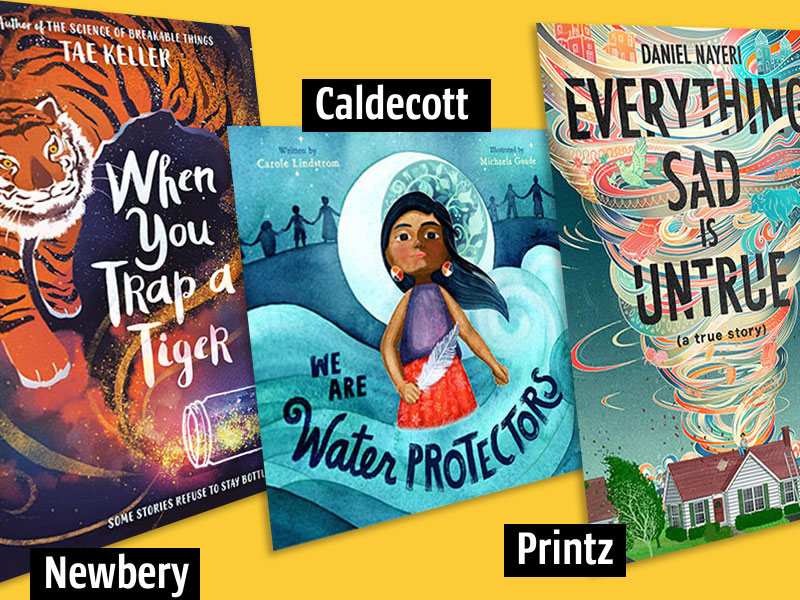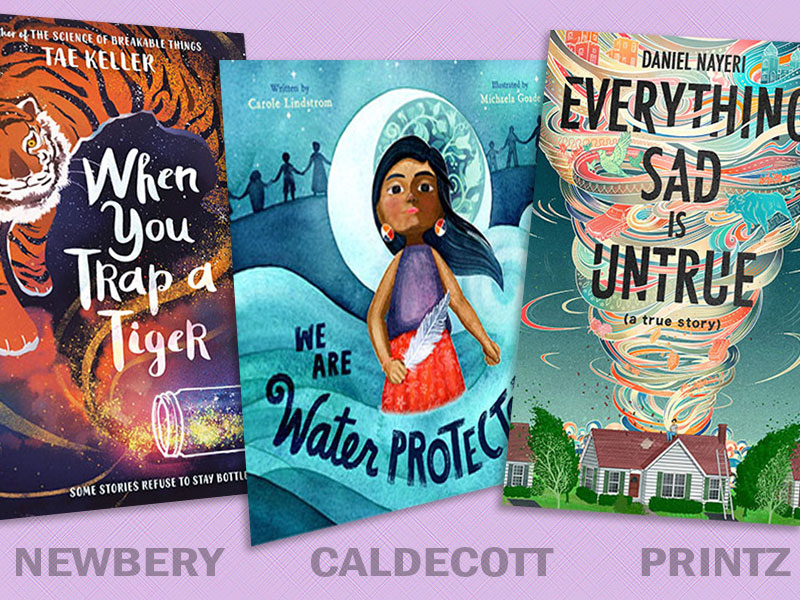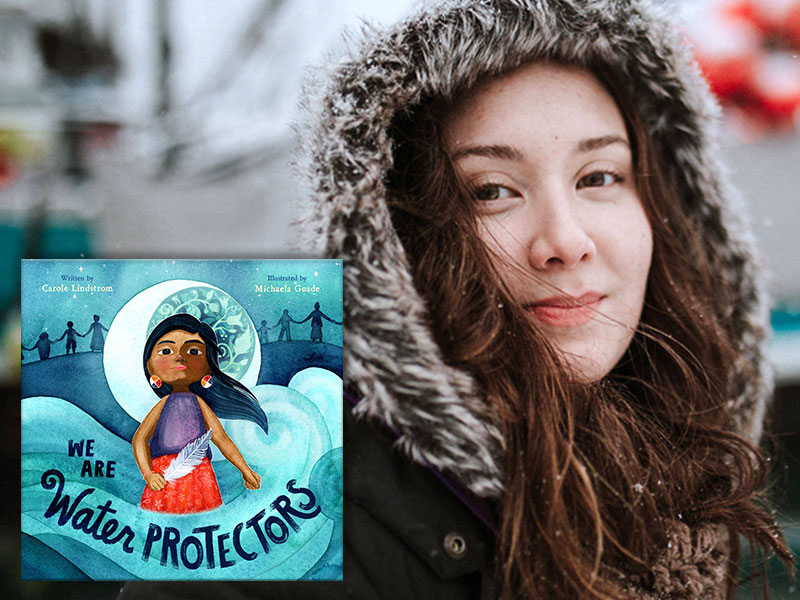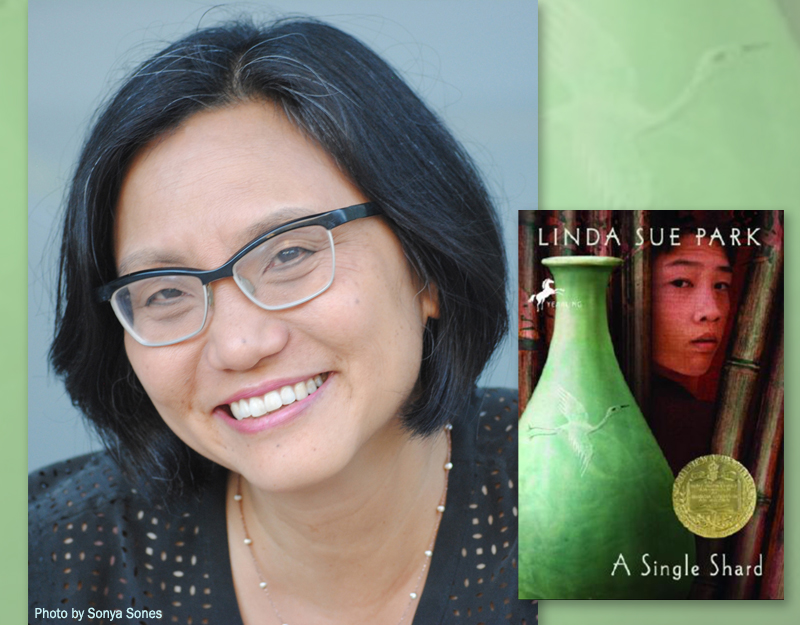Revisiting Sequels: Larson, Farmer, Gantos
We’ve already discussed P.S. BE ELEVEN and AL CAPONE DOES MY HOMEWORK, but there is also a further trio of Newbery sequels to consider this year: HATTIE EVER AFTER, THE LORD OF OPIUM, and FROM NORVELT TO NOWHERE.
 I never read HATTIE BIG SKY because it didn’t have much buzz going into the YMAs and I was taking a bit of a breather between my Newbery and Printz years, so I’m afraid I’m not going to be much help here since I haven’t read this one either. I’m going to lean on the reviews, and let your comments determine whether this one merits more serious consideration. Horn Book: “Larson’s excellent research makes the early twentieth century come alive: Hattie experiences an earthquake, flies in an airplane, and interviews President Woodrow Wilson in a broken elevator. Hattie’s transformation from a naive, timid “country mouse” to a confident, independent young woman makes the story’s ending — in which she discovers where (and with whom) home really is — all the more gratifying.” Kirkus: “Larson’s prodigious research allows her to accurately recreate San Francisco between 1915 and 1920, and the city will come alive for readers as much as it does for Hattie, with crowds of people, clanging streetcar bells, the smells of China Town and 10-story-high skyscrapers. Readers will fall for this earnest, wide-eyed and strong-minded young woman who does indeed become a reporter at the San Francisco Chronicle, covering baseball, an airplane excursion and an earthquake and even interviewing President Woodrow Wilson.”
I never read HATTIE BIG SKY because it didn’t have much buzz going into the YMAs and I was taking a bit of a breather between my Newbery and Printz years, so I’m afraid I’m not going to be much help here since I haven’t read this one either. I’m going to lean on the reviews, and let your comments determine whether this one merits more serious consideration. Horn Book: “Larson’s excellent research makes the early twentieth century come alive: Hattie experiences an earthquake, flies in an airplane, and interviews President Woodrow Wilson in a broken elevator. Hattie’s transformation from a naive, timid “country mouse” to a confident, independent young woman makes the story’s ending — in which she discovers where (and with whom) home really is — all the more gratifying.” Kirkus: “Larson’s prodigious research allows her to accurately recreate San Francisco between 1915 and 1920, and the city will come alive for readers as much as it does for Hattie, with crowds of people, clanging streetcar bells, the smells of China Town and 10-story-high skyscrapers. Readers will fall for this earnest, wide-eyed and strong-minded young woman who does indeed become a reporter at the San Francisco Chronicle, covering baseball, an airplane excursion and an earthquake and even interviewing President Woodrow Wilson.”
ADVERTISEMENT
ADVERTISEMENT
 THE HOUSE OF THE SCORPION was all the rage when it was published ten years ago, winning the National Book Award, a Newbery Honor, and a Printz Honor. THE LORD OF OPIUM is very good in its own right, but I’m also not surprised that it isn’t getting more buzz; we all have dystopia ennui. Since I quoted reviews for HATTIE BIG SKY, I’ll include my own assessment in the Horn Book: “Farmer introduces some vivid new characters to her already colorful cast, enlarges the scope of her world-building, and eschews the quest plot that characterizes most of her work for a more nuanced one of mystery and intrigue. Yet ethical dilemmas remain at the heart of this novel, and, if anything, become elevated because of Matt’s newfound power and responsibility. “Where did it all end? How much wickedness could you do in the service of good before it turned into pure evil?”
THE HOUSE OF THE SCORPION was all the rage when it was published ten years ago, winning the National Book Award, a Newbery Honor, and a Printz Honor. THE LORD OF OPIUM is very good in its own right, but I’m also not surprised that it isn’t getting more buzz; we all have dystopia ennui. Since I quoted reviews for HATTIE BIG SKY, I’ll include my own assessment in the Horn Book: “Farmer introduces some vivid new characters to her already colorful cast, enlarges the scope of her world-building, and eschews the quest plot that characterizes most of her work for a more nuanced one of mystery and intrigue. Yet ethical dilemmas remain at the heart of this novel, and, if anything, become elevated because of Matt’s newfound power and responsibility. “Where did it all end? How much wickedness could you do in the service of good before it turned into pure evil?”
 We never gave DEAD END IN NORVELT its own proper post, always discussing it in tandem with other books, and then it went on to take the Medal, so I wonder if history isn’t repeating itself here . . . To my mind, DEAD END may have been the funniest book of the year, it may have been the best historical fiction of the year (Scott O’Dell Award), and yes, even the most distinguished contribution to American literature for children, but–and this is a big but–I felt that as a mystery it left a lot to be desired. No Edgar nomination for DEAD END. What a delightful surprise, then, that this sequel takes up the one unsatisfying element of the previous book and makes us reconsider the first book in an entirely new light! What else I loved: the episodic plot of DEAD END gives way to the road trip in NORVELT; the historical trivia is complemented by a running joke about comic books that provides a perfect cover for numerous literary allusions; and it’s shorter than the first one. It’s safe to say that I liked this one even better than the first book, but I worry that what makes it brilliant is the very thing that’s so difficult to bring to the Newbery table: how it forces you to revisit and reinterpret the events of the first book.
We never gave DEAD END IN NORVELT its own proper post, always discussing it in tandem with other books, and then it went on to take the Medal, so I wonder if history isn’t repeating itself here . . . To my mind, DEAD END may have been the funniest book of the year, it may have been the best historical fiction of the year (Scott O’Dell Award), and yes, even the most distinguished contribution to American literature for children, but–and this is a big but–I felt that as a mystery it left a lot to be desired. No Edgar nomination for DEAD END. What a delightful surprise, then, that this sequel takes up the one unsatisfying element of the previous book and makes us reconsider the first book in an entirely new light! What else I loved: the episodic plot of DEAD END gives way to the road trip in NORVELT; the historical trivia is complemented by a running joke about comic books that provides a perfect cover for numerous literary allusions; and it’s shorter than the first one. It’s safe to say that I liked this one even better than the first book, but I worry that what makes it brilliant is the very thing that’s so difficult to bring to the Newbery table: how it forces you to revisit and reinterpret the events of the first book.
Filed under: Uncategorized
About Jonathan Hunt
Jonathan Hunt is the Coordinator of Library Media Services at the San Diego County Office of Education. He served on the 2006 Newbery committee, and has also judged the Caldecott Medal, the Printz Award, the Boston Globe-Horn Book Awards, and the Los Angeles Times Book Prize. You can reach him at hunt_yellow@yahoo.com
ADVERTISEMENT
ADVERTISEMENT
SLJ Blog Network
Newbery/Caldecott 2025: Spring Check-In
Ellen Myrick Publisher Preview: Spring 2024 – Cicada, Creston, Diamond, and Eye of Newt
Number Call | Review
Navigating the High School and Academic Library Policy Landscape Around Dual Enrollment Students
How Can We Make Writing More Cool in School? A guest post by author Polly Holyoke
ADVERTISEMENT








I enjoyed HATTIE EVER AFTER, but along with P.S. BE ELEVEN and AL CAPONE, I think it was largely because I was already in love with the characters. All three books I snapped up as soon as my library had them, dropped everything else, and read them in as close to one sitting as possible as if afflicted with Harry Potter syndrome. But all three books I think are not as strong as their Honored predecessors. HATTIE EVER AFTER is a little less-than-smooth in trying to fill the new reader in on Hattie’s backstory and is essentially more escapist than the remarkable HATTIE BIG SKY. This one is more of a classic small town girl makes it in the city tale and (SPOILER) you never expect anything less than a happy ending. Not that I would wish Hattie anything less.
I read Hattie Big Sky and Hattie Ever After almost back-to-back. I loved the former, and found the sequel lacked the magic of Hattie on the homestead. I also missed many of the secondary characters from the first book. Someone on GoodReads commented that in the sequel, Hattie is too old for a Newbery audience. While the content is perfectly G-rated, it doesn’t read like a book for children 14 and younger.
I was less impressed with HATTIE EVER AFTER as well. HATTIE BIG SKY was so wonderfully nuanced. The villain of the piece did some unpleasant things, but you could understand the context. The ending of HATTIE BIG SKY was fresh and exciting to me. Versus, HATTIE EVER AFTER – the title says it all. It’s a more stereotypical journey of struggle and eventual triumph. It takes a lot of work, yes, but Hattie eventually gets pretty much everything she wants. The villains of the piece (one of which I saw coming a mile away, though I think younger readers will miss it) did not seem subtle at all. They were simply bad people who used others without apparent regret. And, sure, there are people like that in the world, but far fewer than you’d think.
Absolutely with you on the second NORVELT book being much better than the first — not only as a mystery, but also, I would argue, as a coming-of-age novel. I wondered if this was just some quirk of me as a reader, so it’s nice to know that others have had the same reaction!